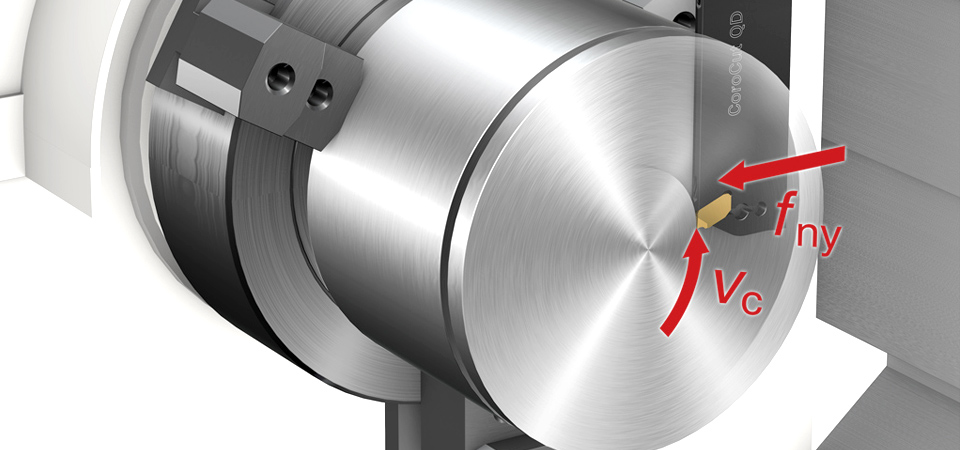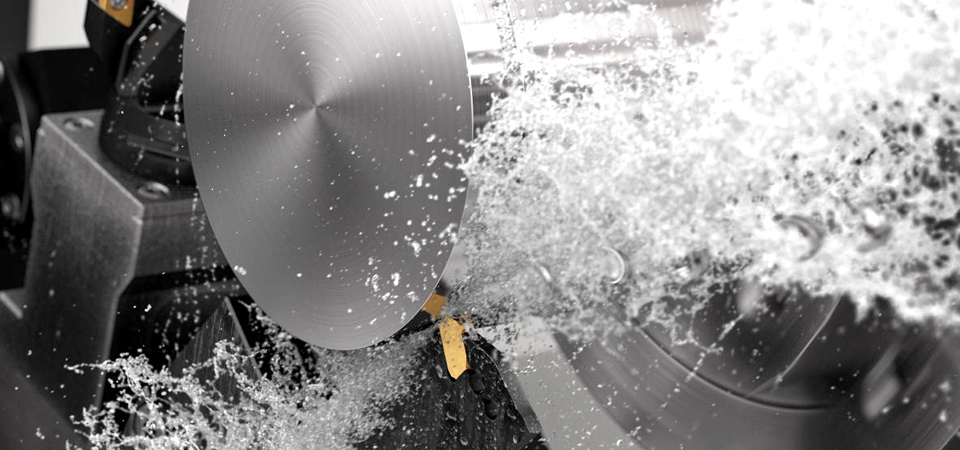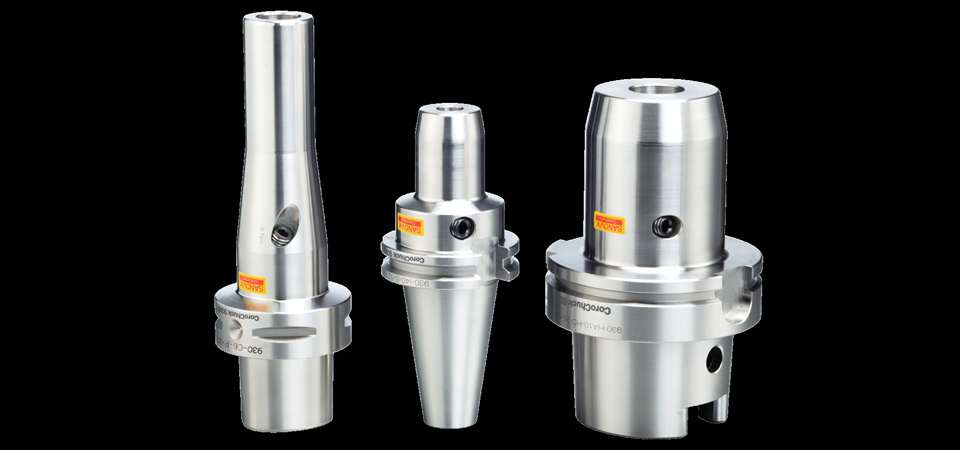2017/09/26 15:09 | Pageview:3945 | From: Sandvik
In conventional lathe-type machine tools, the capability of feed motion in the XZ plane is an inherent limitation. In a parting operation, this inevitably directs the resultant vector of cutting forces sharply across the cross-section of the tool, resulting in high loads and susceptibility to deformation. The classical parting blade design compensates for this with a large height relative to the width.
Sandvik Coromant engineers now have a remedy that utilizes the modern machines’ capability to feed the tool in the Y direction. The new concept places the top face of the insert parallel to the end of the blade, as if rotating the insert seat 90° counterclockwise. The new blade cuts its way into the workpiece with essentially its front end, which roughly aligns the resultant vector of cutting forces with the longitudinal axis of the blade. FEM analysis confirms that this eliminates critical stresses typical to conventional blades and increases the blade stiffness by six times compared with standard designs. Put another way, the extent of deformations was as low as one-sixth of the deformations generated in standard blades.
In terms of application, the new Y-axis parting method is astonishingly simple. Similarly to conventional blades, the cutting edge is positioned as close to the center line of the workpiece as possible. This is accomplished automatically as a side product of the tool length measurement, which the new tool requires for each setup. This also verifies the correct center height.

Two machine tool types in particular benefit from the new concept: multi-task machines and turning centers.
The domain of turning centers is mass production, typically from bar stock of 65 millimeters (approximately 2.6 inches) in diameter, where the biggest benefits of Y-axis parting are improved productivity and surface quality. The opportunities for quality optimization are very interesting because parting off is typically the last stage for a component. Thus, any work stages after parting off are preferably eliminated. Machining economics can be further improved by reducing the parting width.

For multi-task machines, Y-axis parting blades primarily offer increased accessibility and capability for larger diameters. A pre-test confirmed a 50 percent increase in the overhang when parting off a conventional 120-millimeter (approx. 4.7 inches) diameter bar at the maximum feed capacity of the insert. A 300 percent productivity increase was achieved with no process security complications. In a customer test case, Y-axis parting successfully replaced band sawing for a 180-millimeter (approx. 7.1 inches) diameter Inconel bar, resulting in significant productivity improvement due to dramatically shorter machining times.
Y-axis parting requires minimal changes in a typical production setting. The increased maximum cutting diameter of 180 millimeters (approx. 7.1 inches) can obviously alter setups, but in other respects, very little needs to be changed. The CoroCut® QD blades come in standard widths of 3 and 4 millimeters, fit in regular holders and use standard inserts. The changes are mainly in pre-setting,programming and slightly different measurements due to compensation in the Y direction.
Test case
The Sandvik Coromant Production unit in Renningen, Germany, is currently using Y-axis parting in production of CoroChuck® 930 and other basic holders. Expectations have been exceeded in all diameters and materials, and the new solution is being escalated into all applicable machines and bar diameters up to 102 millimeters (approx. 4 inches).
“With the rapid sales increase of CoroChuck® 930, we really need to ramp up our production,” says Mattias Brandt, team leader CNC programming. Adds CNC programmer Stefan Frick, “We have been able to cut our cycle times by up to 15 seconds only by changing the parting-off cycle to utilize the Y-axis, and at the same time we also get a much more robust process.”
Machine: DMG GMX400
Material: Alloy steel X40 and 16Mn
Component: CoroChuck® 930
Cutting data: vc 120 m/min (394 ft/min), fn 0.35 mm/rev (.014 in/rev)
Results: Machining time reduction of five to 15 seconds/part, thanks to substantially higher feed rate, increased from 0.10 mm/rev (.004 in/rev) to 0.35 mm/rev (.014 in/rev).

Summary
A new parting blade and method substantially improve the dynamic stability of a tool by realigning the resultant cutting force. The benefits include improved productivity, quality, material savings and reduced noise levels. The necessary setup modifications are relatively simple.
